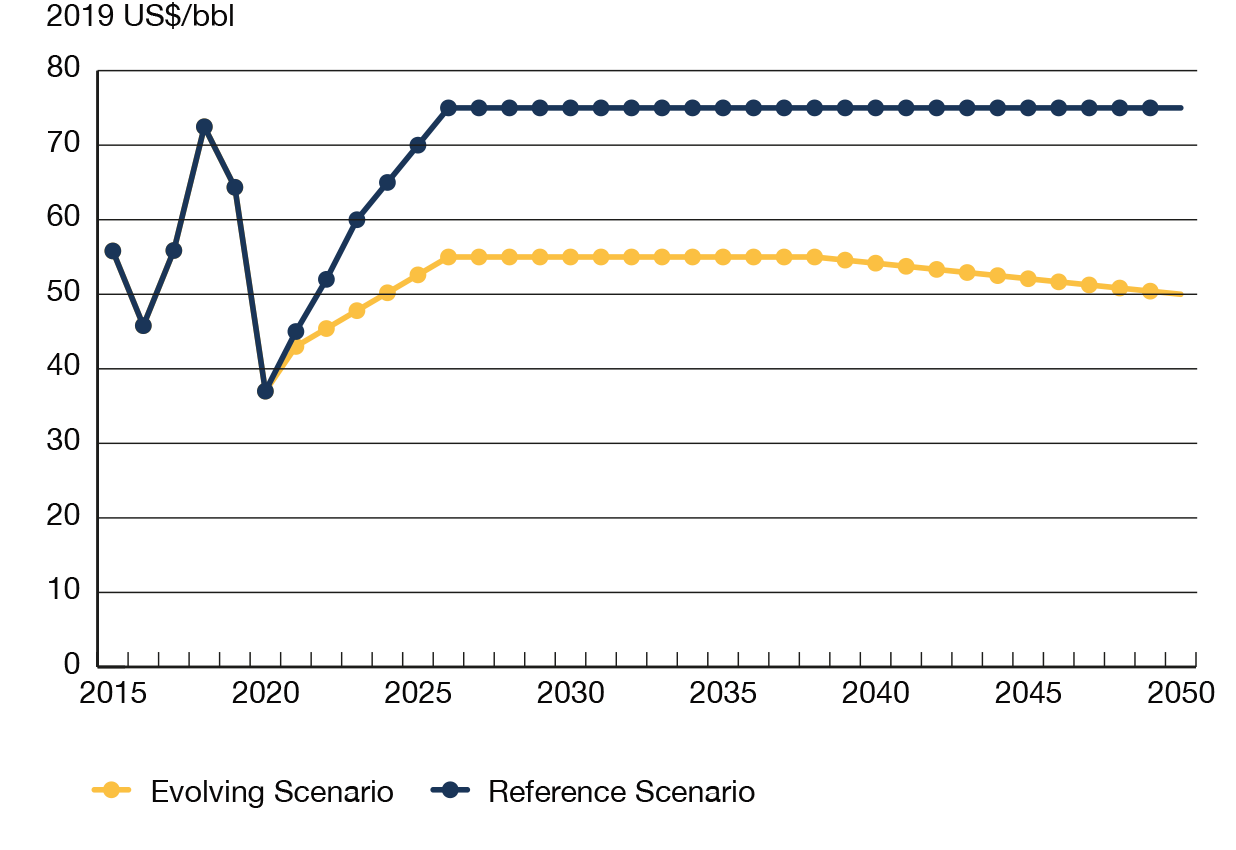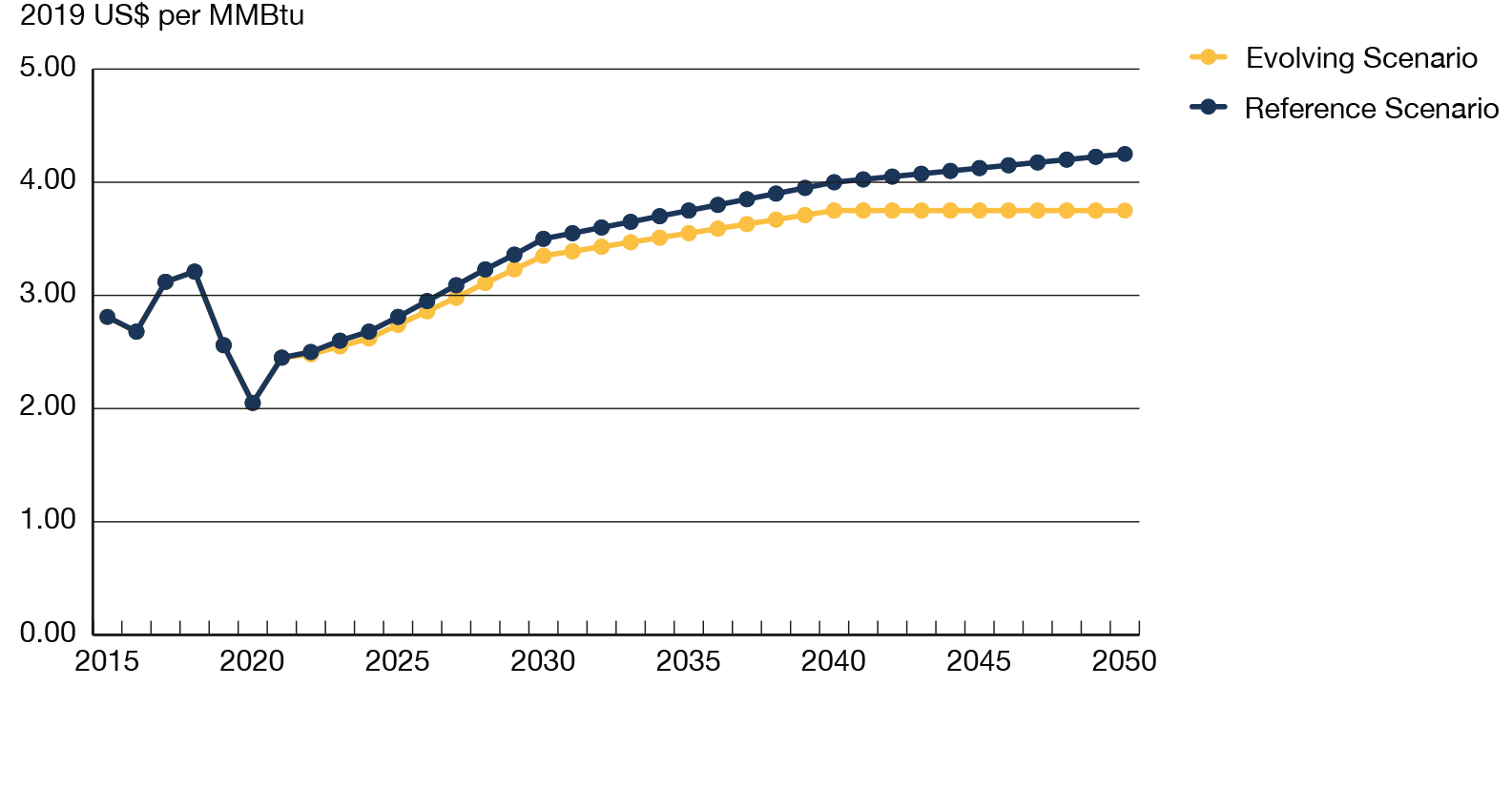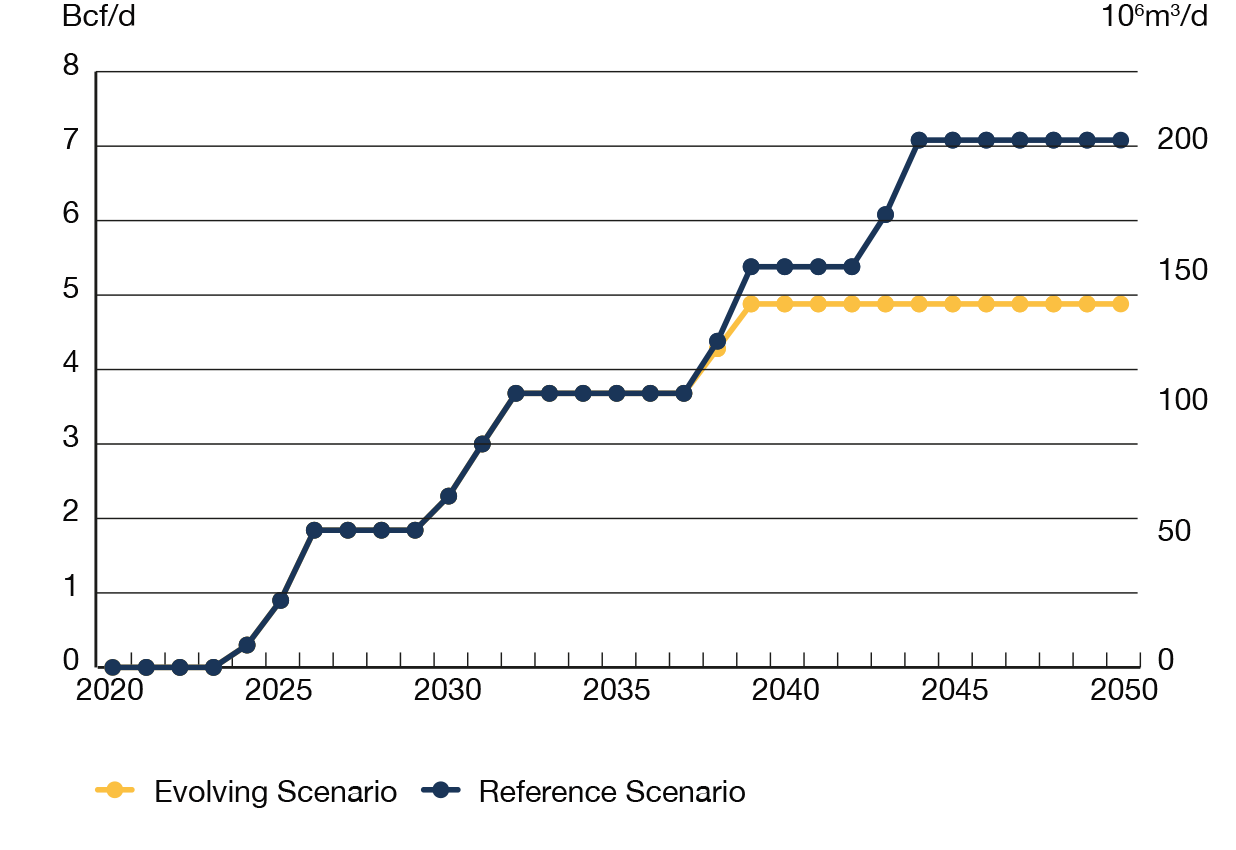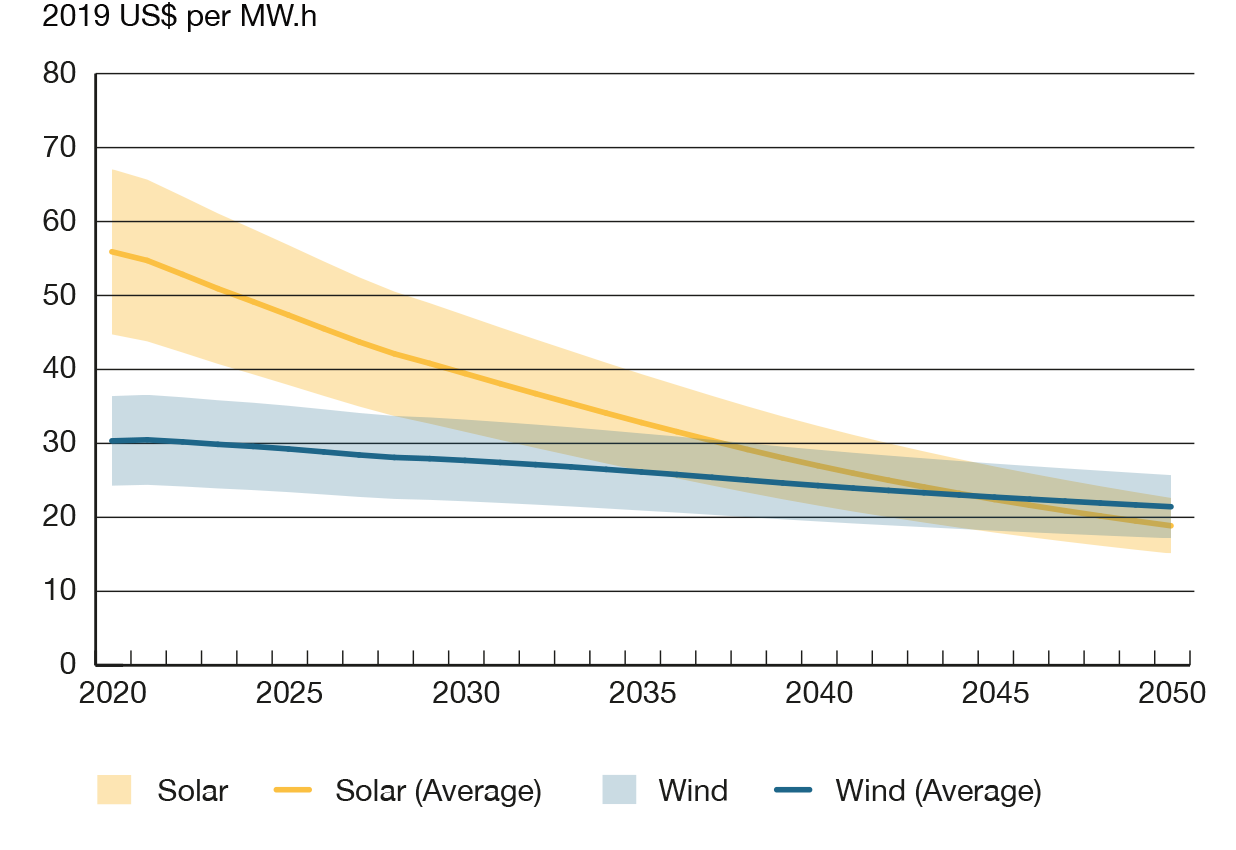ARCHIVED - Scenarios and Assumptions
This page has been archived on the Web
Information identified as archived is provided for reference, research or recordkeeping purposes. It is not subject to the Government of Canada Web Standards and has not been altered or updated since it was archived. Please contact us to request a format other than those available.
Scenario Overview
EF2020 includes two core scenarios that explore potential outcomes for the Canadian energy system over the next 30 years. These scenarios are the Evolving Energy System Scenario (Evolving Scenario) and the Reference Energy System Scenario (Reference Scenario). These scenarios provide energy supply and demand projections that differ based the level of future action5 to reduce GHG emissions. The difference in the premise between these two scenarios impacts their specific assumptions – such as crude oil prices and renewable energy costs – which drive the supply and demand projections. EF2020 also includes a discussion of even greater climate action, in the “Towards Net-Zero” section. The “Towards Net-Zero” section does not provide a projection of the future, but rather a discussion of some of the key issues in transitioning towards a net-zero energy system.
The primary scenario in EF2020 is the Evolving Scenario. The core premise of the scenario is that action to reduce the GHG intensity of our energy system continues to increase at a pace similar to recent history, in both Canada and the world. This evolution implies less global demand for fossil fuels, and greater adoption of low carbon technologies. In contrast, the Reference Scenario assumes limited additional action to reduce GHGs beyond those policies in place today, implying higher demand for fossil fuels and less adoption of low carbon technologies. Consistent with these implications, in the Evolving Scenario we assume lower international prices for fossil fuels and a higher pace of technological change over the projection period, compared to the Reference Scenario.
EF2020 focuses primarily on the Evolving Scenario in order to provide a detailed exploration of the ongoing energy transition towards less carbon-intensive energy sources and technologies. Historically, there have been some important changes over long time periods in Canadian and global energy systems. Exploring a scenario where the energy system is assumed to evolve considerably is useful for a 30 year outlook to 2050. Allowing for continued change is a key feature of the Evolving Scenario. The Reference Scenario is a useful benchmark in illustrating a scenario with less assumed change.
Figure A.1 illustrates the key differences between the Evolving and References scenarios, and the Towards Net-Zero discussion. The vertical axis is a notional representation of the degree of action in GHG emission reduction. The horizontal axis is time, with the projection period starting in 2020.
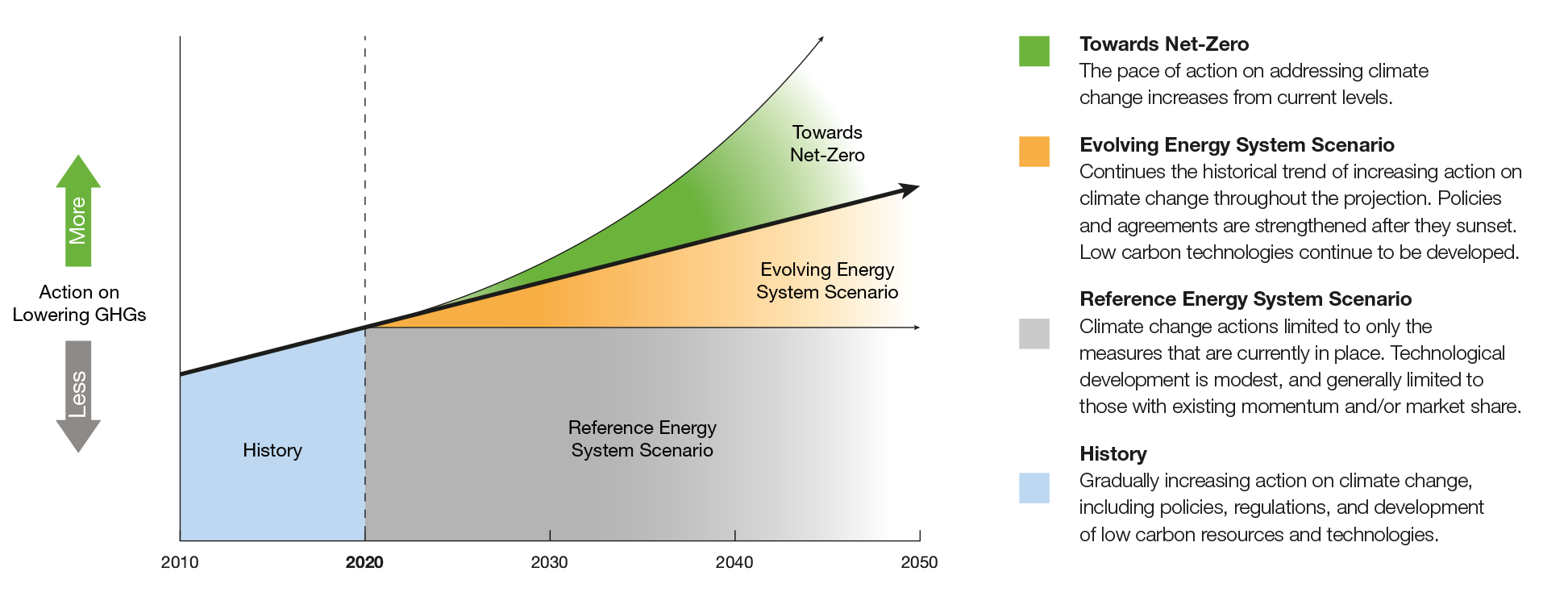
Description
This figure illustrates the key differences between the Evolving and References scenarios, and the Towards Net-Zero discussion. The vertical axis is a notional representation of the degree of action in GHG emission reduction. The horizontal axis is time, with the projection period starting in 2020. In the historical period, action is increasing, and in the projection period, the Evolving Scenario continues this increase at the historical rate. In the projection period, the Reference Scenario maintains action at 2020 levels, while in the Towards Net-Zero discussion, the pace of increase of action increases relative to history.
The upward sloping line from 2010 to 2020 in Figure A.1 represents the increasing level of action by governments, businesses, and citizens to reduce GHG emissions. This reflects that the breadth and stringency of federal, provincial, and municipal government climate policies have increased over this period. Likewise, a myriad of technologies which play a role in reducing GHG emissions, have steadily increased, improved, and become less expensive over the past decade
Over the projection period (2020-2050), the pace of action diverges in the Evolving and Reference Scenarios. Unlike the Evolving Scenario, the Reference Scenario continues current levels of action forward into the projection period. This implies that only policies in place at the time of analysis are included. This results in only modest improvements in already established technologies that produce and consume energy, and stronger global demand – and higher international prices - for fossil fuels. As a result, the Reference Scenario provides a baseline for discussing what the Canadian energy system might look like if there is limited future progress on reducing GHG emissions. Previous iterations of Canada’s Energy Future, going back to the 2007 Report, included a Reference Case. The framework underlying the Reference Scenario in EF2020 is conceptually similar to the Reference Case.
The Evolving Scenario provides a projection that reflects steady, continued progress towards reducing the GHG intensity of the energy system. It is not a pathway to a specific GHG emission reduction target. The assumptions in this scenario aim to provide an outlook where progress continues at roughly the same pace as in recent history. The Evolving Scenario includes a set of hypothetical future domestic climate policies to reflect greater ambition relative to the Reference Scenario. We describe the policies later in this section and in Appendix A. The Evolving Scenario also assumes a greater rate of technological progress relative to the Reference Scenario, with lower costs and greater efficiency of emerging technologies. Finally, we reflect weaker global demand for fossil fuels through lower assumed international prices for crude oil and natural gas compared to the Reference Scenario.
It is difficult to predict the policies that governments will put in place in the future. The future domestic policies included in the Evolving Scenario are entirely hypothetical and are not a recommendation, prediction, or evaluation of future policies that governments may choose to enact.
Together, the Evolving and Reference Scenarios provide a range of potential outcomes for Canada’s energy system over the next 30 years. As discussed in the “Results” section, neither scenario depicts the deep reductions in fossil fuel consumption that would be needed to achieve net-zero GHG emissions by 2050. Such a result would require an acceleration of policy and technology drivers relative to the pace in recent history. To explore what such an energy future might look like, EF2020 includes three segment-specific discussions. These discussions explore what net-zero emissions by 2050 could look like for three specific segments of the Canadian energy system. The “Towards Net-Zero” section describes the assumptions, trends, and uncertainties of these areas.


 Description
Description

